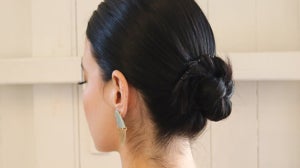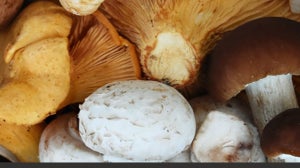
all
have breasts in one form or another whether we’re male, female or non-binary. However, we’ll be discussing the physical changes that occur in our breasts throughout three of the main stages of a woman’s life;pregnancy
,motherhood
, and theWhat Makes A Breast, A Breast?
The term ‘breast’ actually describes the internal area that lies beneath the nipple, and above the pectoral muscle. It consists of fatty tissue, milk-producing glands, connective tissue, ligaments, nerves, blood vessels, lymph vessels and lymph nodes.
At birth, we all begin with a layer of fatty tissue and milk-producing glands in this area, and in fact, until puberty girls and boys have the same tissue makeup. It’s only after puberty that girls grow additional tissue and begin to develop what we traditionally think of as breasts.
Fun Fact: Biological men have all the equipment to be able to breastfeed a child. The only thing missing is the right balance of hormones needed to kickstart production. There have been many documented cases of men inducing lactation in order to nourish their infants.
Changes in Breasts During Pregnancy
From the moment you fall pregnant, your body begins to prepare and your breasts are one of the first to leap to action. In fact, for many women, it’s pain and tenderness in their breasts that is the first symptom of pregnancy.
Breasts grow an average of 50% over the course of pregnancy, as the internal structures that were lying dormant get ready to play their role in nursing a new baby and your body as a whole readies itself for motherhood. From around 15 weeks, the milk-producing breast cells become active, and by week 22 they begin to produce milk.
With all of this going on, it’s hardly a surprise that breasts become a bigger focus of daily life, with seemingly endless shopping for new maternity bras, theconstant itch
of taught skin, wishingstretch marks
away, and the odd leaky boob!Many women enjoy the boost in fullness and cup size during pregnancy and manage to alleviate the side-effects by using
skin oil designed for stretch marks
to soothe any itching and improve skin elasticity.The Role of Breasts in Motherhood
After pregnancy, hormones begin to return to normal, and, if a woman chooses to breastfeed, after a few months of nursing the breasts will swing less extremely between full and empty. Lack of breast density is one of the top complaints from mothers postnatally. It’s a common misconception that breastfeeding is responsible for these changes - that in short, breastfeeding gives you saggy boobs. This isn’t the case at all, in fact, the most dramatic changes in breast fullness can often be found in women who haven’t breastfed at all.
After around
six months
of breastfeeding, breasts begin to lose some of their stored fatty tissue and slowly decrease in size, though will often still be larger than pre-pregnancy. When you wean completely, whether this is after 2 days, 2 months or 2 years, the breasts begin to revert to their original size - this process takes around3 months
. So, all pregnant woman will go through dramatic changes to their breast size, but the difference is whether you lose that fatty tissue gradually over a longer period, or quickly over a shorter period. For some women, their skin and tissue snap back to being firm and pert, but for the majority, emptier, softer breasts are a reality. All is not lost though, as there are arange of products
designed to help improve firmness in the breasts once you are no longer pregnant or breastfeeding. Here's one of our favourites:Clarins Bust CareBust Beauty Extra-Lift Gel 50ml
(Save 20%)Our Price: £35.20
Menopause and Breasts: What To Expect
As you enter the menopause, the hormones oestrogen and progesterone begin to peak significantly, much like they do during puberty. This can cause various changes in the shape, size and density of your breasts.
For some woman, the size of their breasts will increase, for others, they’ll decrease, all depending on the combination of hormones being produced by the body. One common experience of most women experiencing menopause is that most will also notice that the amount of glandular tissue in their breasts will lessen and be replaced by more fatty tissue, this leads to a further lack of fullness.
From around the age of 30 skin begins to lose its elasticity, which is whyfine lines and wrinkles
become more commonplace. The same is true for the skin on your breasts. Combined with the fluctuations in size over the past decades, the skin loses much of its ability to “bounce back” and so breasts can become more drooped in appearance.While all this may sound like losing your pert breasts of yesteryear is a sad inevitability, it’s all the more reason to love the skin you’re in
today
. And while we can’t stop time, we can slow down its effects, here are a few of our recommended products for improving the appearance of your bust.
Clarins Bust Care
Bust Beauty Firming Lotion 50ml
(Save 15%)Our Price: £33.95
Prai Ageless
Bust Creme 60ml
Our Price: £30.00
Sisley Body Contouring
Phytobuste + Decollete Intensive Bust Compound 50ml
(Save 35%)Our Price: £123.45
Was this helpful? If so, shop all of our breast related products, explore more about hormones and read more by visiting allbeauty.com

Related Articles








